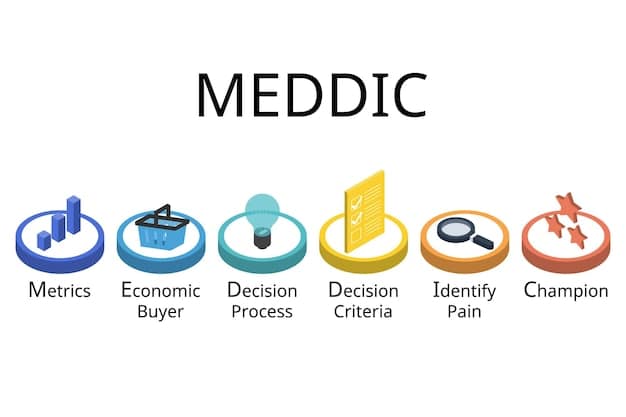Medicare Open Enrollment 2025: Your Ultimate Guide to Changes & Deadlines

Medicare Open Enrollment 2025 is crucial for beneficiaries to review and adjust their healthcare plans, ensuring they have the most suitable coverage for the upcoming year by understanding key deadlines and plan changes.
Navigating the complexities of Medicare can feel overwhelming, especially when it comes to enrollment periods. The upcoming Medicare Open Enrollment 2025: Deadlines and Key Changes presents a crucial opportunity for beneficiaries to review their current coverage and make informed decisions about their healthcare needs for the coming year. This guide breaks down everything you need to know, from important dates to significant plan updates.
Understanding Medicare Open Enrollment 2025
The Medicare Open Enrollment period is an annual window where Medicare beneficiaries can make changes to their health plans. It’s a time to assess whether your current plan still meets your needs and explore alternatives.
This period is not to be confused with the Initial Enrollment Period when you first become eligible for Medicare. Open Enrollment is for those already enrolled who want to make adjustments.
Why is Open Enrollment Important?
Open Enrollment provides the flexibility to adjust your coverage based on changing health needs, new plan offerings, and updated drug formularies. Failing to review your options could mean missing out on better coverage or cost savings.
- Ensures you have the right coverage for your healthcare needs.
- Allows you to compare different plans and their benefits.
- Provides an opportunity to potentially lower your healthcare costs.
Ultimately, understanding and participating in open enrollment empowers you to take control of your healthcare.
Key Dates and Deadlines for 2025
Staying on top of the deadlines is essential to ensure your changes take effect when you need them to. Missing these dates can leave you stuck with a plan that doesn’t meet your requirements.
Mark your calendar now so you don’t miss out on this valuable opportunity.
Official Dates
The Medicare Open Enrollment period runs from October 15th to December 7th each year. Any changes made during this time will take effect on January 1st of the following year.
October 15th: Open Enrollment begins.
December 7th: Open Enrollment ends.
January 1st: New coverage begins.

It’s crucial to remember that these dates apply specifically to the Open Enrollment period. Other enrollment periods may exist for special circumstances, but this is the primary window for most beneficiaries to make changes.
What Changes Can You Make?
During Medicare Open Enrollment, you have the power to change various aspects of your Medicare coverage. This flexibility ensures you can tailor your plan to your individual needs.
Understanding the available options is the first step in making informed choices.
Available Changes
- Switch from Original Medicare to a Medicare Advantage plan.
- Switch from a Medicare Advantage plan back to Original Medicare.
- Change Medicare Advantage plans.
- Enroll in a Medicare Part D (prescription drug) plan.
- Change Medicare Part D plans.
- Drop your Medicare Part D coverage.
These changes allow you to adjust your coverage based on your healthcare requirements, budget, and preferences. Consider factors like provider networks, drug formularies, and out-of-pocket costs when making these decisions.
Remember, it’s not just about changing plans; it’s about finding the best fit for your unique situation.
Understanding Medicare Parts A, B, C, and D
To make informed decisions during Open Enrollment, it’s important to understand the different parts of Medicare. Each part covers specific healthcare services and has its own costs and rules.
Knowing what each part offers is the first step in building a comprehensive coverage plan.
The Core Components of Medicare
Part A (Hospital Insurance): Covers inpatient hospital stays, skilled nursing facility care, hospice care, and some home health care.
Part B (Medical Insurance): Covers doctor’s services, outpatient care, preventive services, and some durable medical equipment.
Part C (Medicare Advantage): Combines Part A and Part B benefits, and often includes Part D (prescription drug coverage). These plans are offered by private insurance companies.

Part D (Prescription Drug Coverage): Helps cover the cost of prescription drugs and is offered by private insurance companies.
Each part plays a crucial role in providing comprehensive healthcare coverage. Understanding their differences enables you to make informed decisions during Open Enrollment.
How to Review Your Current Plan
Before making any changes, it’s essential to thoroughly review your current Medicare plan. This evaluation will help you identify any gaps in coverage or areas where you could potentially save money.
Start by understanding what your current plan offers and how it aligns with your current needs.
Steps to Reviewing Your Coverage
- Assess Your Healthcare Needs: Consider any changes in your health status, medication requirements, or healthcare preferences.
- Review Your Plan’s Summary of Benefits: This document outlines your plan’s coverage, costs, and rules.
- Check the Drug Formulary: Ensure your prescription drugs are covered and understand the associated costs.
- Evaluate Provider Networks: Confirm that your preferred doctors and hospitals are still in your plan’s network.
By completing these steps, you’ll have a clear understanding of your current plan’s strengths and weaknesses. This knowledge will empower you to make informed decisions during Open Enrollment.
Don’t skip this essential step. A thorough review can make all the difference.
Tips for Choosing the Right Plan
Selecting the right Medicare plan can feel overwhelming, but with the right approach, you can find a plan that meets your needs and budget. Consider these tips to guide your decision-making process.
Start by defining your priorities and matching them with the plan features that matter most to you.
Key Considerations
- Assess Your Healthcare Needs: Consider chronic conditions, specialist visits, and medication requirements.
- Compare Plan Costs: Evaluate premiums, deductibles, copays, and coinsurance.
- Review Provider Networks: Ensure your preferred doctors and hospitals are included.
- Check Drug Formularies: Confirm that your prescription drugs are covered at an affordable cost.
Additionally, consider factors like travel coverage, extra benefits (e.g., vision, dental, hearing), and customer service ratings when making your decision.
Remember, there’s no one-size-fits-all solution. The best plan is the one that addresses your individual needs and priorities.
By carefully considering these factors and seeking personalized advice, you can confidently choose the right Medicare plan for 2025.
| Key Aspect | Brief Description |
|---|---|
| 🗓️ Enrollment Dates | October 15th to December 7th annually. |
| ✅ Plan Changes | Switch plans, add/drop Part D, move from Original Medicare to Advantage. |
| 📝 Review Needs | Assess health, medication needs, and provider networks annually. |
| 💲 Cost Factors | Consider premiums, deductibles, copays, and drug costs when comparing plans. |
Frequently Asked Questions
▼
Medicare Open Enrollment begins on October 15th and ends on December 7th of each year. This period allows beneficiaries to make changes to their Medicare coverage.
▼
You can switch between Original Medicare and Medicare Advantage, change Medicare Advantage plans, enroll in or change Part D plans, or drop Part D coverage during this period.
▼
Review your plan’s Summary of Benefits, assess your healthcare needs, check the drug formulary, and evaluate provider networks to understand your current coverage.
▼
If you miss the deadline, you generally must wait until the next Open Enrollment period to make changes, unless you qualify for a Special Enrollment Period due to specific circumstances.
▼
You can get help from the Medicare website, your local State Health Insurance Assistance Program (SHIP), or by consulting with a licensed insurance agent who specializes in Medicare plans.
Conclusion
Navigating Medicare Open Enrollment 2025: Deadlines and Key Changes requires careful consideration of your individual healthcare needs and available plan options. By understanding the key dates, reviewing your current coverage, and comparing alternatives, you can make informed decisions that ensure you have the best possible Medicare coverage for the upcoming year.





